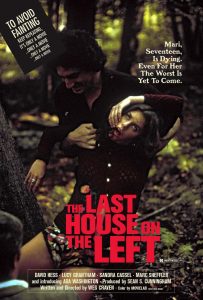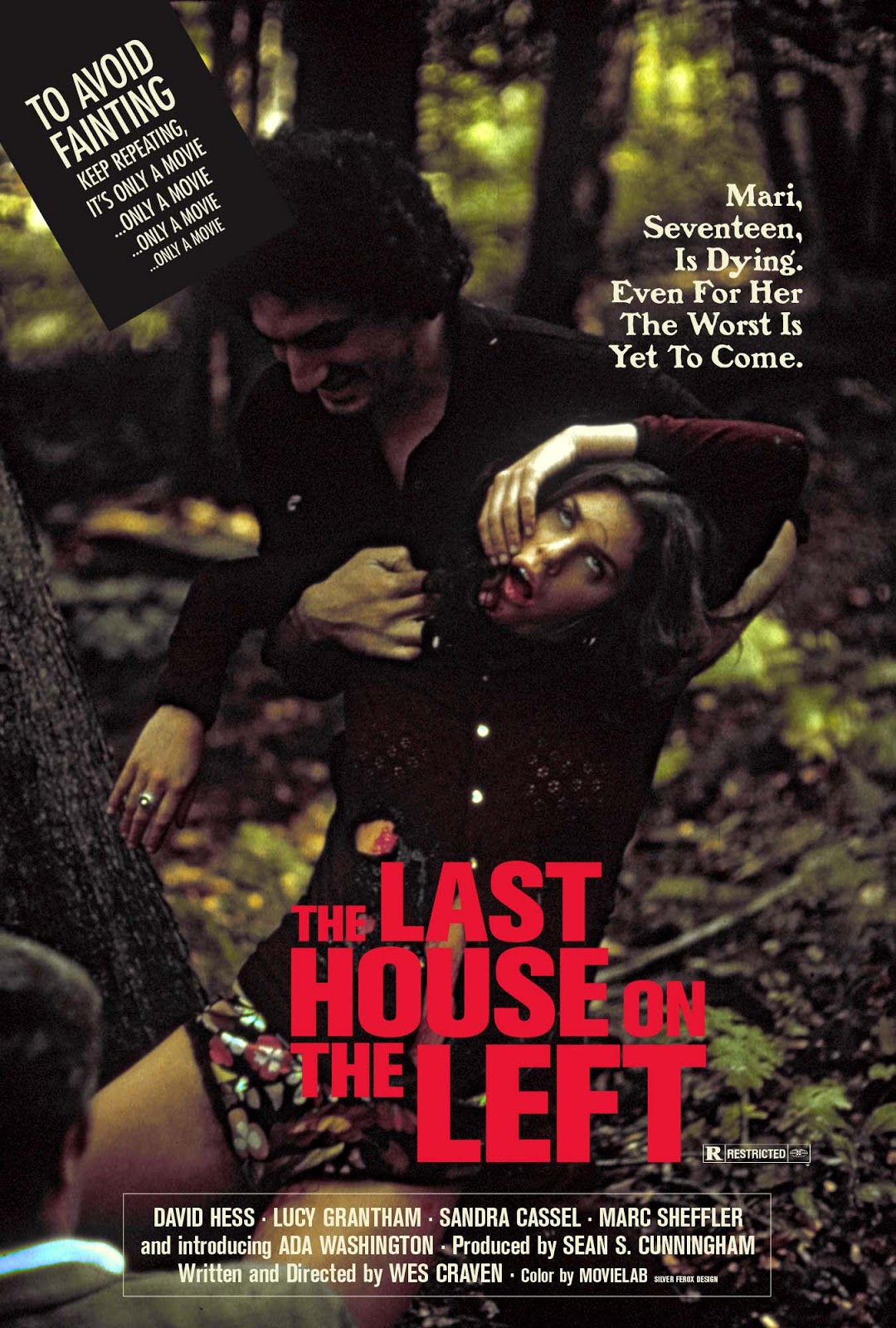
“Night of the Living Dead” and “The Texas Chainsaw Massacre” are two films that received a unanimous critical bashing when they were first released, but are now looked upon as ground-breaking horror masterpieces. That is also a classification that could be used to describe Wes Craven’s “Last House on the Left”, but after 27 years, the film still hasn’t quite gotten the respect it deserves, and its greatness only seems to be recognized primarily among horror fans. While it is certainly not Craven’s most polished film, I still consider it to be his best, and indeed, Craven has acknowledged many times that he doesn’t even want to ATTEMPT to equal it. “Last House” was the first movie that aimed to show an audience what the REAL effects of violence were and the low-budget, documentary-like realism that Craven brought to the proceedings allows it to pack a bigger punch than a thousand professional studio films ever could. Yes, the movie has more than its fair share of flaws, but it is a measure of the film’s power that one can easily overlook them. The most flawed masterpiece of all time may be a strange way to describe a film, but that would be an accurate way to describe “Last House on the Left”.
As virtually everyone knows, the basic plotline is a reworking of Ingmar Bergman’s “Virgin Spring”, but Craven does a superb job of translating the story’s details to a 1970s setting. Two teenage girls, Mari (Sandra Cassel) and Phyllis (Lucy Grantham) go into the big city for a rock concert, only to encounter three of the most memorable villiains in film history: Krug (David Hess), Weasel (Fred Lincoln) and Sadie (Jeramie Rain), who are also accompanied by Krug’s heroin-addicted, guilt-ridden son, Junior (Marc Sheffler). The gang of escaped convicts kidnap the girls and proceed to rape and murder them, but when they seek shelter at the nearest house, they are stunned to find that their hosts just happen to be Mari’s parents – who unleash violent tendencies that they would have never thought possible once they discover that they are housing their daughter’s killers.
The long, painful section of the film where the killers torture and murder the girls is where “Last House on the Left” impresses the most. Before these scenes, the villains have been presented as normal, funny, almost likable individuals, which makes their despicable actions all the more shocking. Craven shoots the scenes of degradation with the raw feel of a documentary, and while this is mostly due to his minuscule budget and lack of filmmaking experience, it lends an uncomfortable air of authenticity to the events. He also demonstrates his ability to toy with the audience’s emotions by intercutting the horror with slapstick scenes involving two inept cops who run into all sorts of misadventures while searching for Krug and his gang. While the idea of mixing the violence with humour is an effective one (and works well during some of his climactic scenes), the cop scenes are done in such broad, over-the-top fashion that they provide way too much of a contrast with the film’s disturbing moments. However, when the girls’ death scenes do occur, they are protracted and extremely intense, and during the rape and murder of Mari, the killers actually give off expressions of shock and remorse for what they have done. Back in 1972, this approach to screen violence was unheard-of.
The outstanding work of the unknown cast is what makes the film as effective as it is. Cassel and Grantham make extremely believable and sympathetic victims, though the real acting honours go to the villains. Hess (who also composed the film’s dated but often effective score) is truly remarkable in his role, making Krug into one of the most unforgettable screen psychopaths, and he is almost matched by veteran porn director Lincoln’s surprisingly effective turn as Weasel, presenting him as a humorous, laid-back character that is capable of shocking, cold-blooded violence. But while the film is often quite disturbing, it also has plenty of entertainment value. When the violence is not being displayed, the tone is very tongue-in-cheek, as Craven provides plenty of sharp dialogue and effective bits of black humour. In particular, the infamous scene where Weasel meets his painful revenge from Mari’s mother, and the dynamite dream sequence that precedes it, manage to be both shocking and oddly entertaining at the same time. But it is the film’s anti-violence statement that makes “Last House” so memorable, as Craven does not allow his characters to feel any satisfaction for their vicious actions. This is easily one of the ten most important horror films of all time, and a real personal favourite of mine. It demands to finally be recognized as the true groundbreaking achievement that it is.

